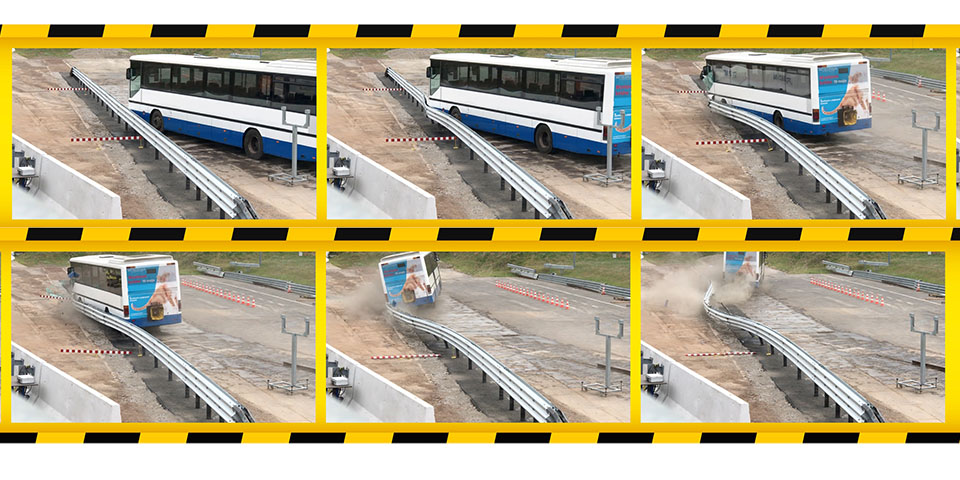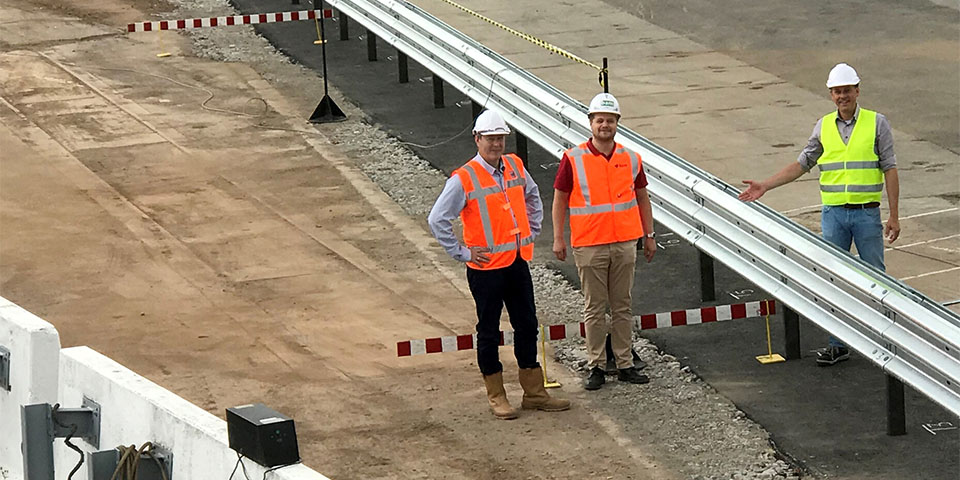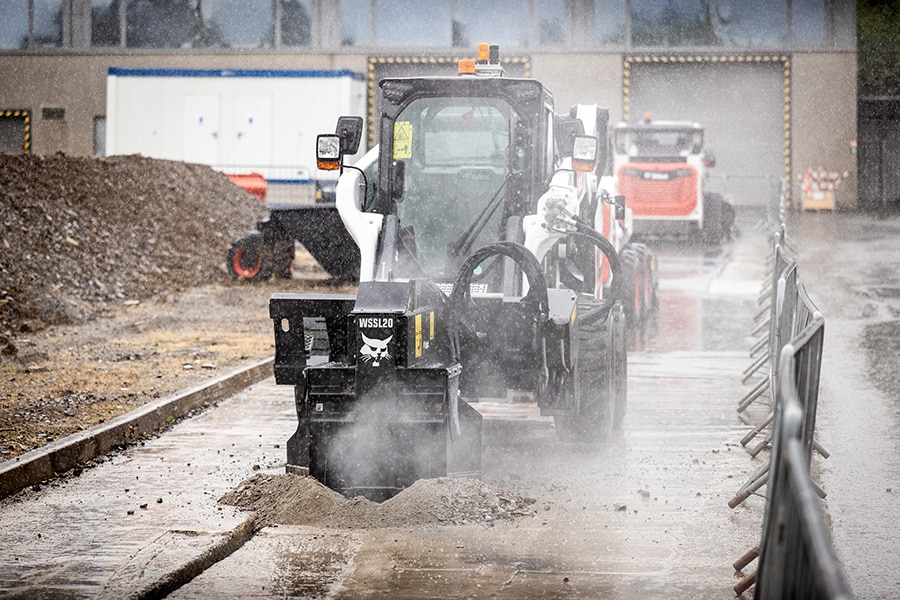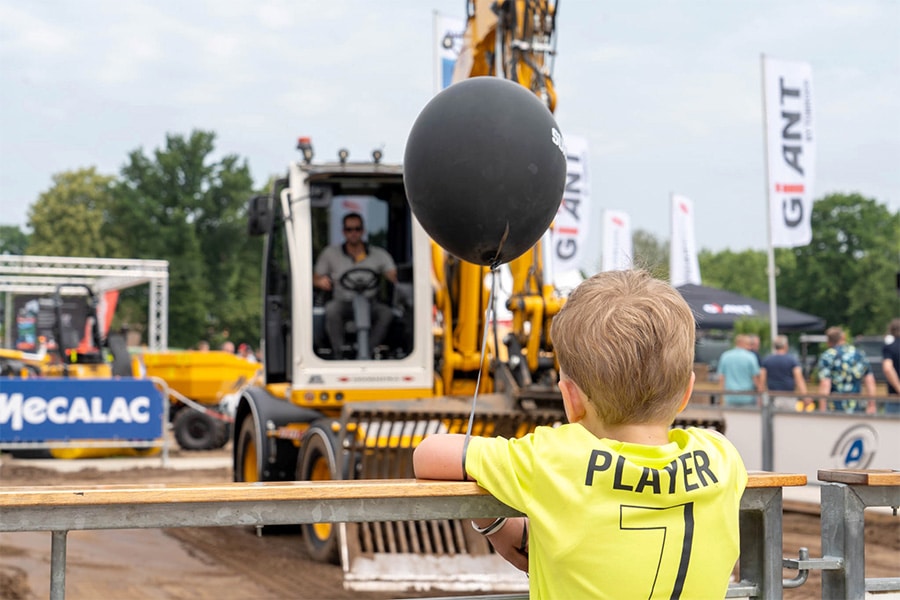
Safe driving on Afsluitdijk thanks to unique guardrail between lanes
When the renovation work on the Afsluitdijk is completed and we all drive comfortably between IJsselmeer and Waddenzee, pay attention to the guardrail between the carriageways. It will be significantly different from the crash barriers you are used to. The guardrail was developed by Saferoad, and the special application is based on an idea by Levvel. As you could read earlier, the renovation of the Afsluitdijk is being carried out by the Levvel construction consortium, in which BAM, Van Oord and Rebel sit, commissioned by the Department of Public Works.
Herman Odijk, Managing Director and Henk Zwartenkot Director of Business Development at Saferoad tell us about the unique solution that will soon separate traffic safely.

The SafeStar 241d performed well in the crash test.
Gain space and create more safety for traffic
"A wish of Rijkswaterstaat in the call for tenders was a widening of the A7 Afsluitdijk within the requirements of transhipment resistance. A traditional guardrail placed in the central reservation fell out for that reason. The other traditional variant, a concrete barrier, was also rejected. The concrete would not contribute to water drainage and would also take away too much space from both lanes," Odijk opens the conversation. "In addition, while concrete block guardrails are good for keeping traffic away from the other lane, the impact of a collision on concrete is actually unacceptable. The safe absorbing effect of the guardrail is then negated by the hard concrete. Another disadvantage is that concrete guardrails are about twice as expensive as other guardrails. For this reason, Levvel wanted an asphalt-mounted, narrow guardrail with excellent properties when it comes to safety. So we came to the table with Levvel, concluding that our SafeStar guide rail would be perfect. Only mounting in asphalt remained as an issue."
The median strip will be replaced with an asphalt layer, ensuring water resistance. Zwartenkot: "The SafeStar guide rail is only 29 cm wide. Mounting in asphalt therefore means a huge space gain that benefits the lanes. An additional advantage is that maintenance of the central reservation is no longer necessary. Rijkswaterstaat only wanted a tested and certified system for the Afsluitdijk. We gladly accepted the challenge, and together with Levvel we stuck our necks out. With Levvel as specifier of requirements, we tested until we had developed a system that met all the requirements. The result is a guide rail of three-wave planks that goes 80 cm deep into the asphalt and has a construction height of 100 cm, with H2/W4 specifications and a high retaining capacity." Added Odijk, "The system not only outperforms conventional guide rails, but is also more durable due to less material use and faster installation. This system will last 50 years and is a contemporary, economical solution also for future new road construction and the replacement market. In countries where development is now taking place, people have also discovered the three-wave plank system by now."

Ruurt Veldman and Danny Kraak (Levvel) along with Herman Odijk at the test rail at the crash site.
One large family of guide rails that can be used anywhere
"The entire family of SafeStar products has been developed by Saferoad in recent years and is complete including transitions, dilations and various retaining capacities, every situation has already been thought of and answered. Actually, there is no reason not to apply the SafeStar everywhere. The fact that the SafeStar 241d mounted in asphalt came about is due to the fact that all the knowledge and experience was already available beforehand. It came down to doing the right tests to get the certifications that are important to the Department of Public Works. We succeeded completely in that," Odijk said.
Leverage the knowledge of the developing manufacturer
Product development and innovation are the driving force behind Saferoad. The budget allocated for crash testing is a sloppy 1.5 million euros per year. "Then you should also expect something from us," says Zwartenkot. "That's why we are always happy when people make use of our knowledge. We are a real knowledge center and we like to share our knowledge. Often only the executing parties are asked to the table for issues, the developers are often skipped. These are missed opportunities, because people often remain stuck in the 'old way of thinking'. After all, the solution and knowledge lies with the developing manufacturer. So make use of our knowledge, not only to save time and money, but especially to be future-proof! Especially for this purpose we have a specialist in house, Henriëtte Soesbeek, she is Road Safety Consultant.
Our first line contact on all issues. For example, the specification service on our website was built entirely by her, an online super tool. Saferoad has the power to serve specific situations with specialized designs."

The SafeStar 241d for the Afsluitdijk is a tested and certified product.
Future-oriented work
Often the reasons for continuing to use guardrail systems dating from the 1970s are quite understandable: the conventional story looks familiar in the road image, people know what they are getting, and installation and maintenance are also familiar. Nevertheless, it would be a shame not to take advantage of the latest developments, which beautifully complement the old NEN 5190 standard. "Levvel and Rijkswaterstaat understand that it is good to work to current standards. For that reason, you will probably soon find our three-wave plank system on the locks. So the same quality, the same safety and good for a brilliant uniform image," Zwartenkot outlines.
In conclusion, Odijk says, "So not only do we provide safe products that meet tomorrow's demand, but we also provide Levvel with a 'safe administration.' Everything is neatly tested, certified and documented. We guarantee a compliant product."



